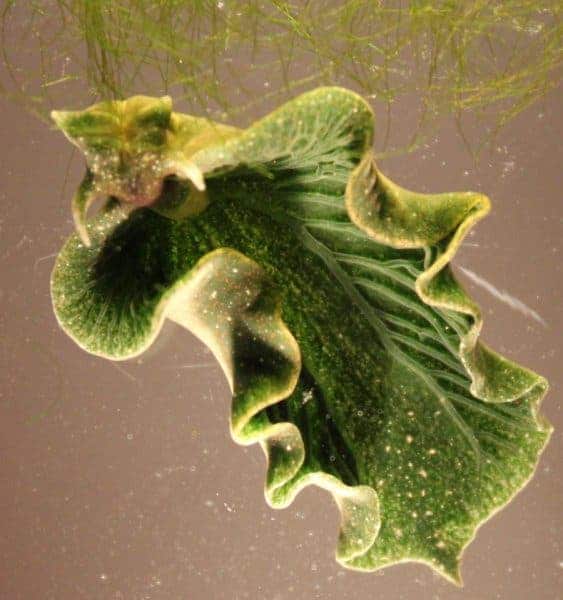Is it an animal? Is it a plant? Strangely, it’s a bit of both — one newly-discovered species of sea slug lives entirely on photosynthesis.

Image credits Karen N. Pelletreau / University of Maine.
Ever wished you could plaster your body with solar panels and just go about your day, feeding off sunlight in lieu of eating? Sorry to break it to you, then, but there’s one sea slug is living your dream right now. According to researchers from the Rutgers University-New Brunswick, the slug can suck raw material from algae to maintain its solar-powered lifestyle.
Light eating
“It’s a remarkable feat because it’s highly unusual for an animal to behave like a plant and survive solely on photosynthesis,” said Debashish Bhattacharya, senior author of the study.
“The broader implication is in the field of artificial photosynthesis. That is, if we can figure out how the slug maintains stolen, isolated plastids to fix carbon without the plant nucleus, then maybe we can also harness isolated plastids for eternity as green machines to create bioproducts or energy.”
Christened Elysia chlorotica, the mollusk can grow to about 2 inches long and lives in the intertidal zone between Nova Scotia, Canada and Martha’s Vineyard, Massachusetts, as well as in Florida, the team reports. As juveniles, the slugs munch on Vaucheria litorea, a non-toxic variety of brown algae, to appropriate their plastids — the algae’s photosynthetic organelles — and store them in their gut lining.
The team used RNA sequencing to see what the slug does with the plastids it ingests. Their results show that the animal’s body actively responds to the organelles, protecting them from digestion and turning on genes to utilize the photosynthetic products they synthesize. The team’s results resemble findings in corals — animals that maintain symbiotic dinoflagellates (algae) which perform photosynthesis to help feed the coral.
Bhattacharya explains that Vaucheria litorea is an ideal food source for the slug because it doesn’t have walls separating adjoining cells in its body — it’s essentially one long tube filled with nuclei and plastids. This means that the slug can suck out all the cellular contents through a single puncture, anywhere along the algae’s outer wall.
After gathering enough of the organelles (in the order of a few million), the slugs become photosynthetic. Just like a plant, they start using sunlight to create sugars (compounds that store chemical energy) in their bodies from carbon dioxide and water.
Previous research performed on other species of sea slugs suggested that the animals steal these plastids and store them as food for later use — similar to how our bodies store fat. So far, Elysia chlorotica seems to be the only species that actually uses them to carry out photosynthesis, Bhattacharya says.
“It has this remarkable ability to steal these algal plastids, stop feeding and survive off the photosynthesis from the algae for the next six to eight months,” he adds.
Finally, the team notes that, while the slugs store plastids, they don’t do the same for nuclei they ingest. They still don’t know how the slug’s body keeps the plastids healthy and operational for months, or how they operate the organelles without the algal nuclei — which normally control the plastids’ activity, Bhattacharya adds.
The paper “Active Host Response to Algal Symbionts in the Sea Slug Elysia chlorotica” has been published in the journal Molecular Biology and Evolution.


